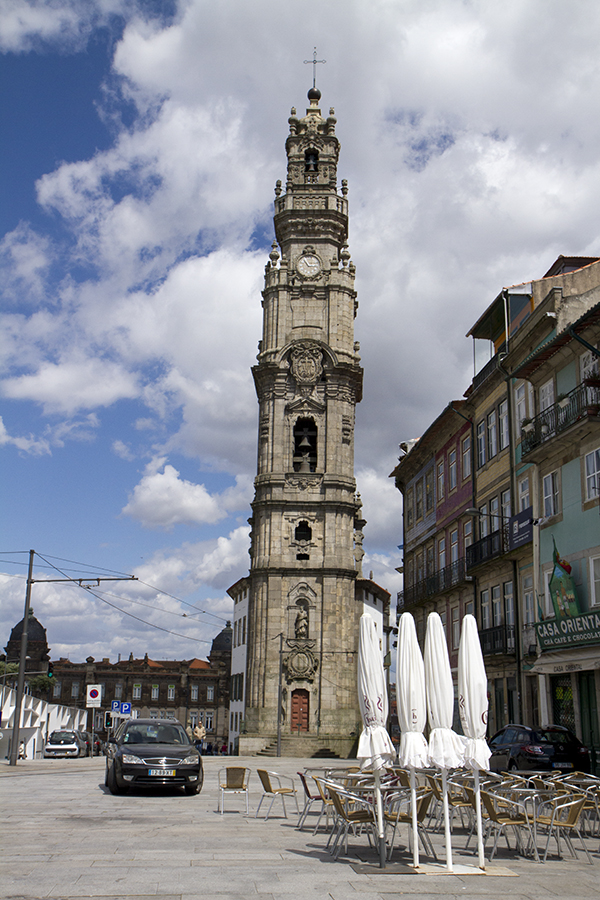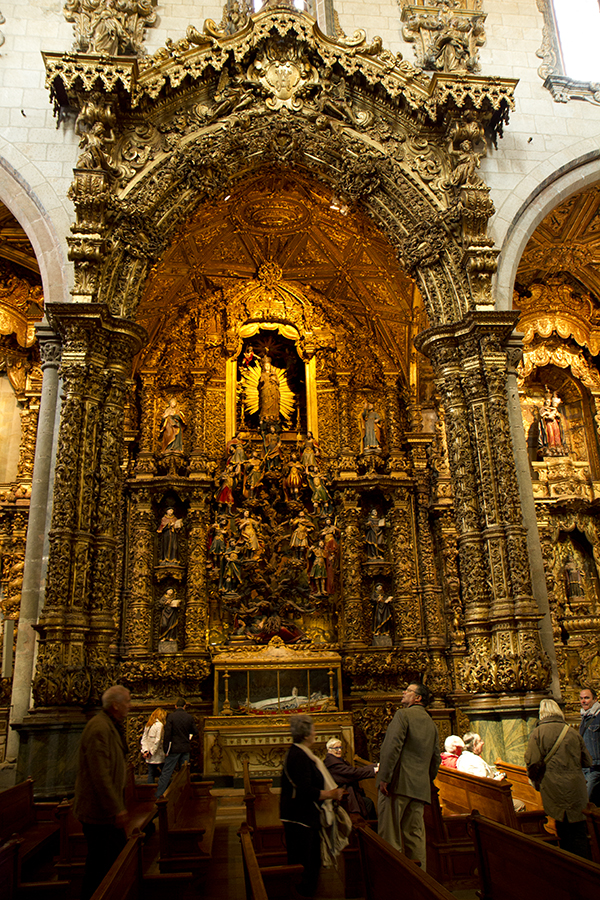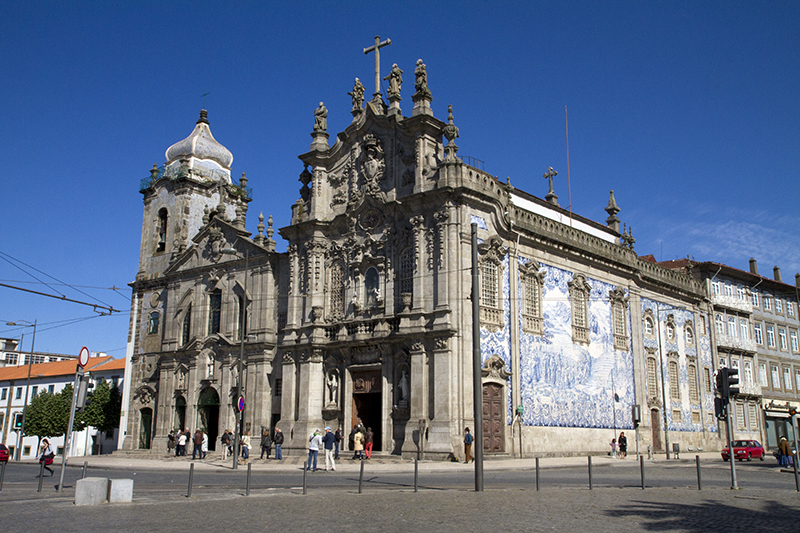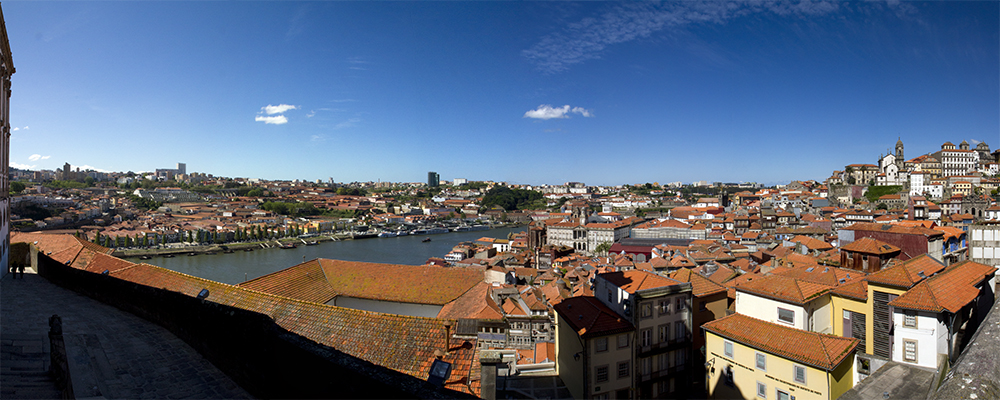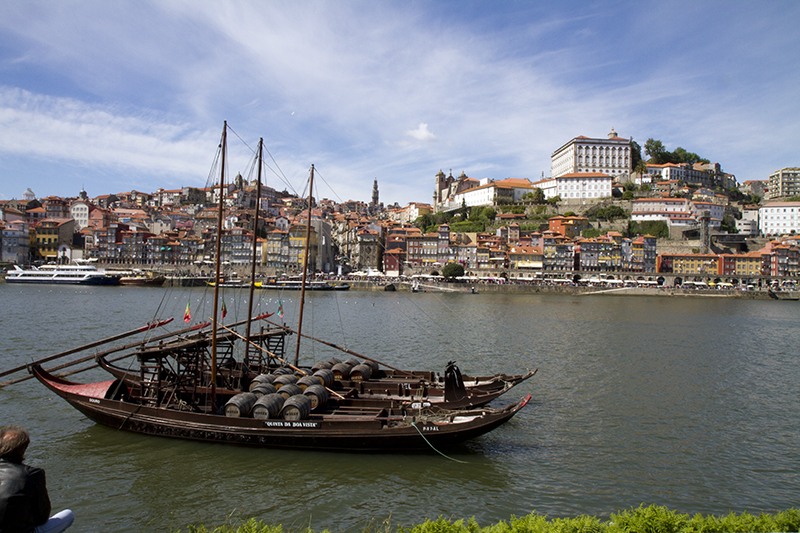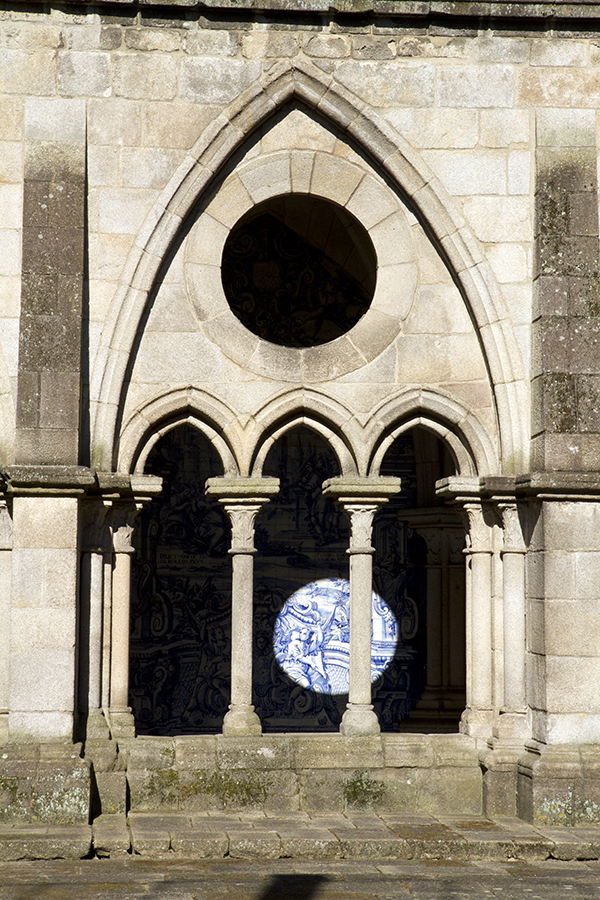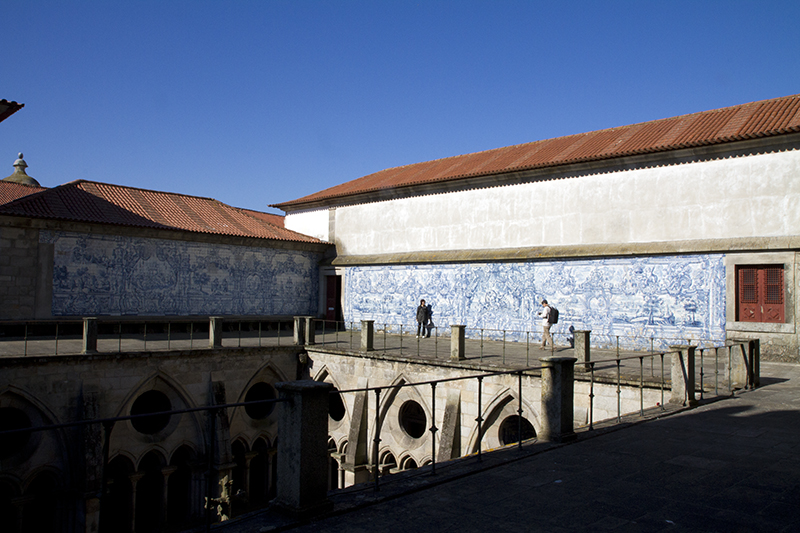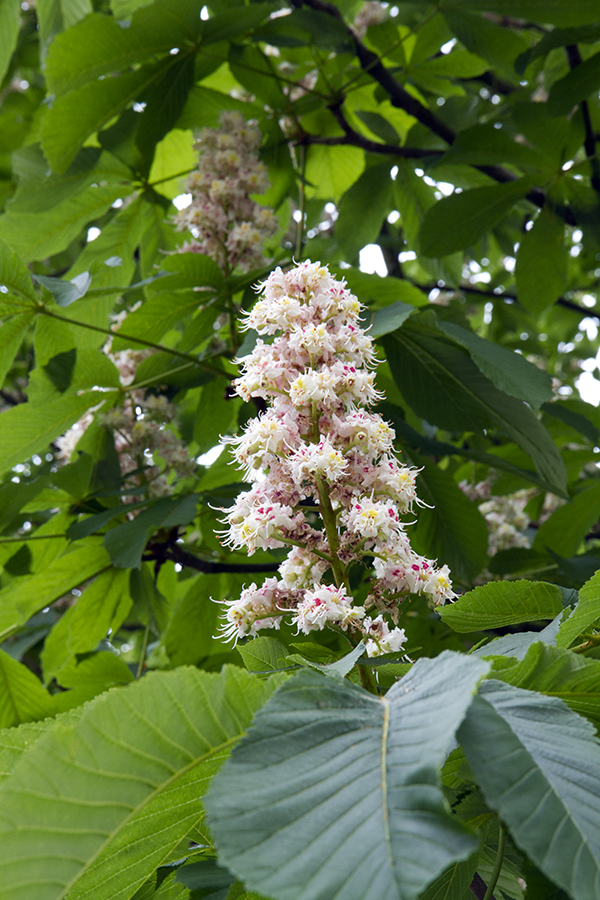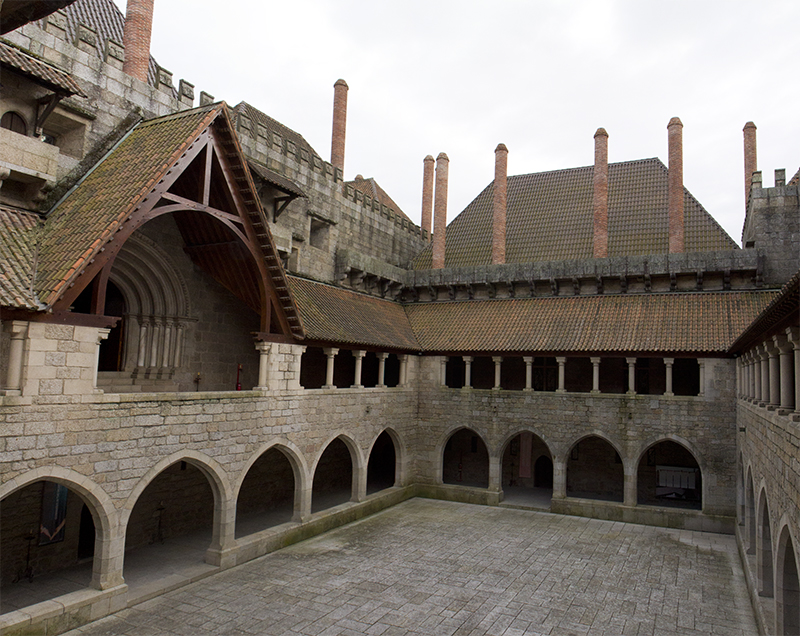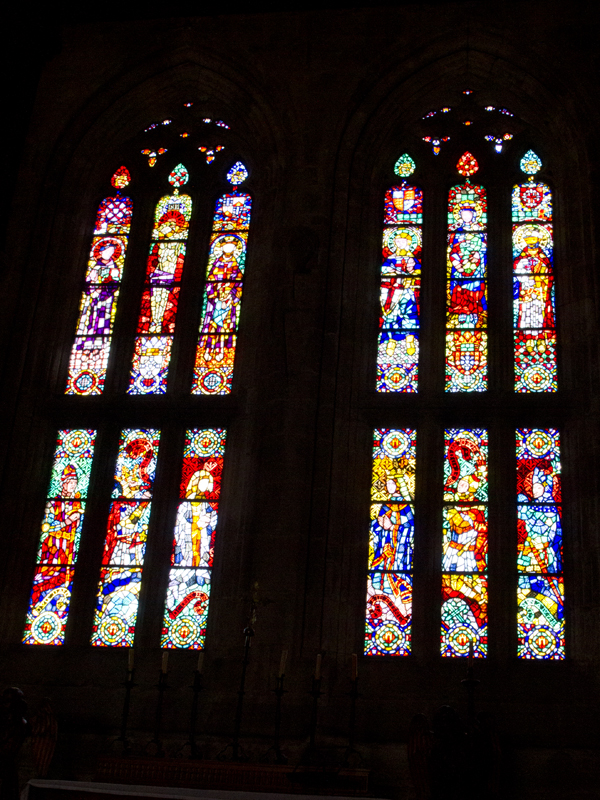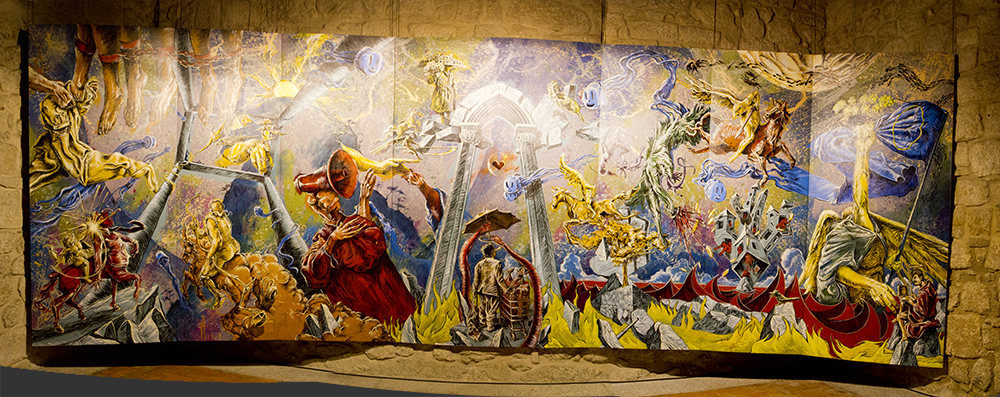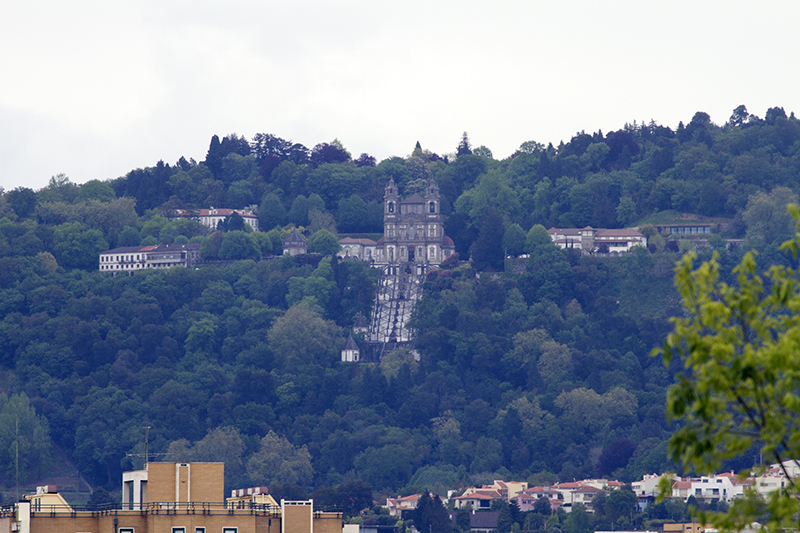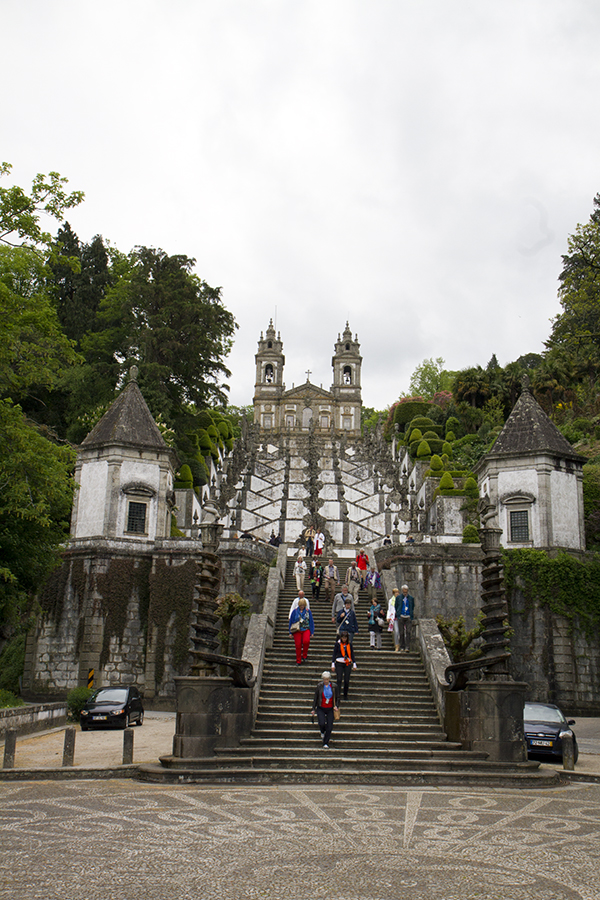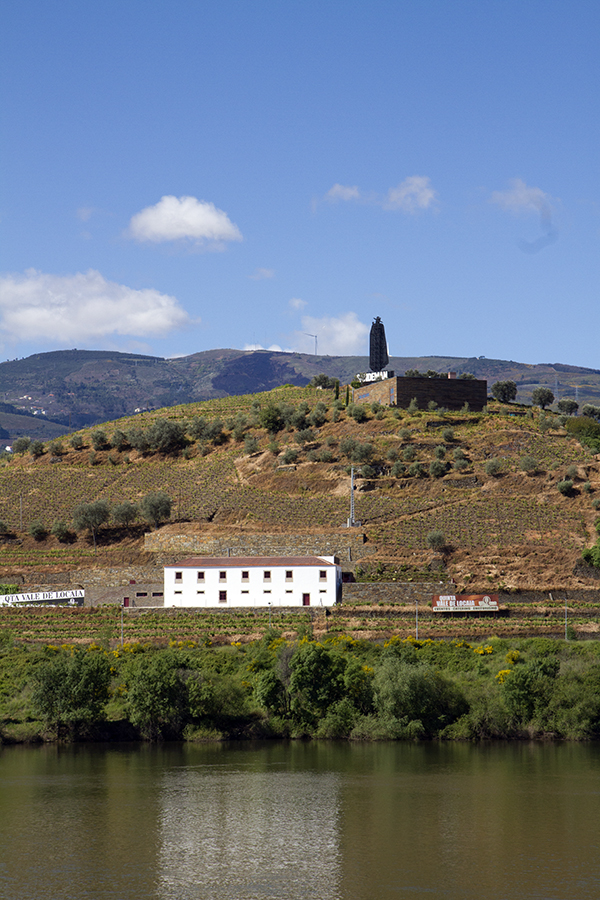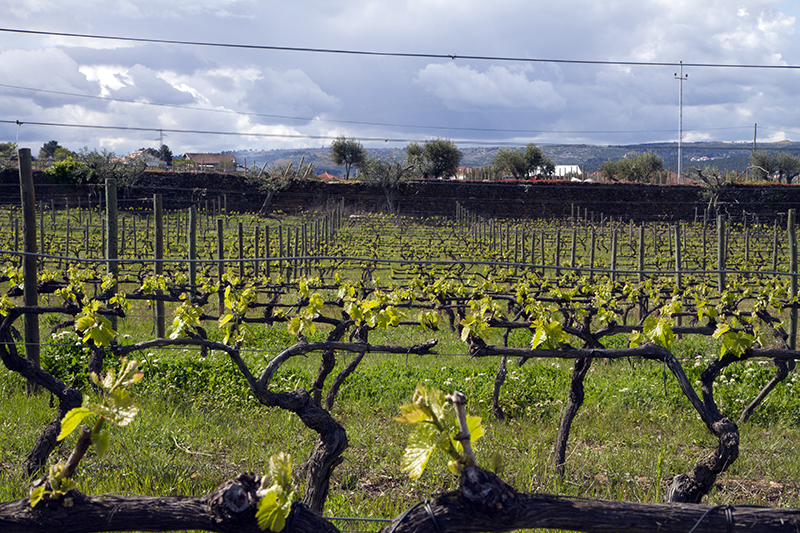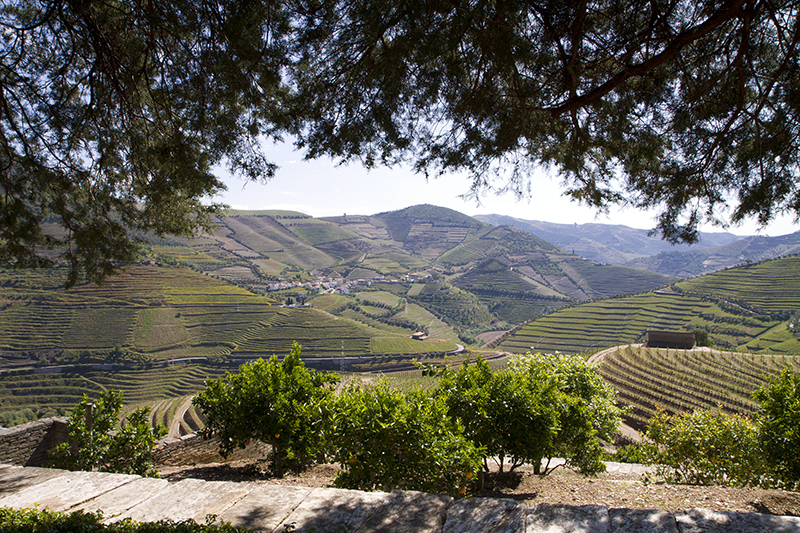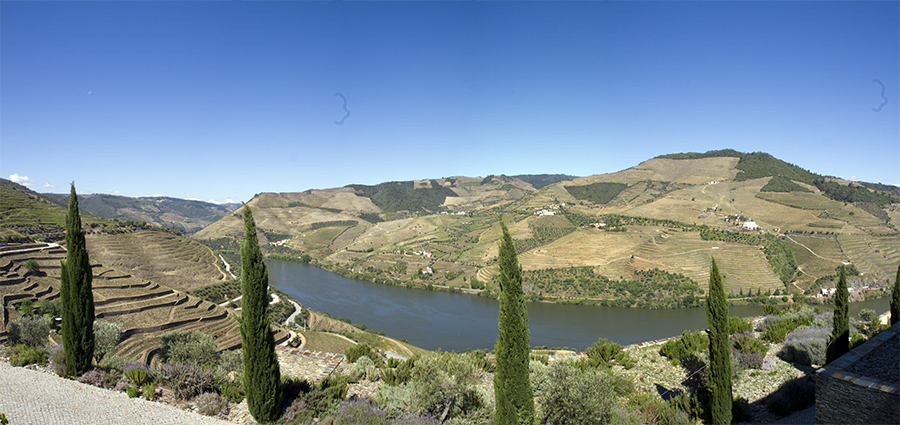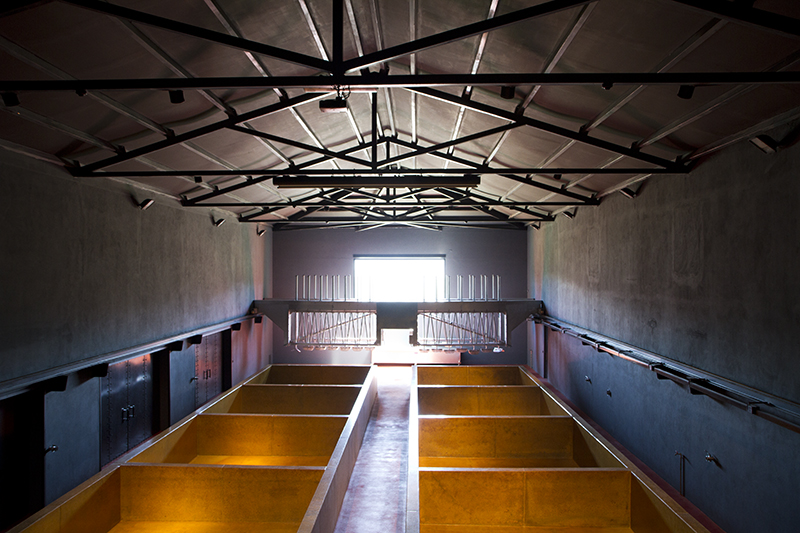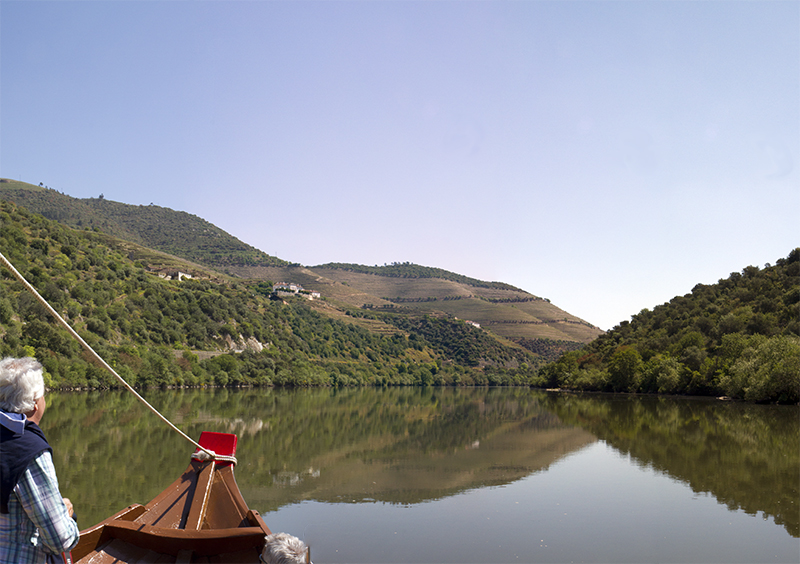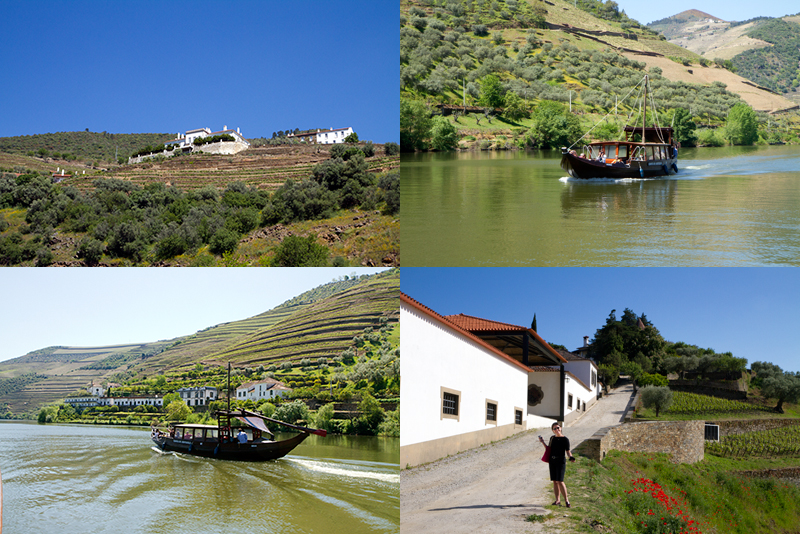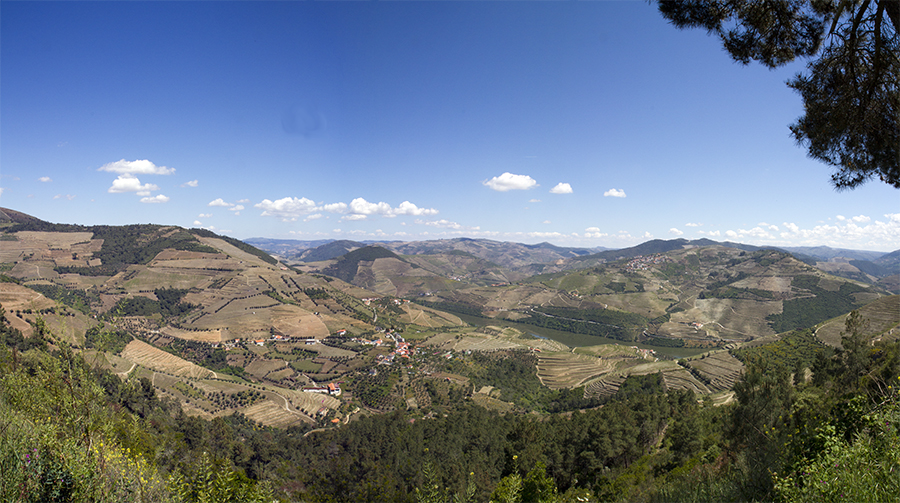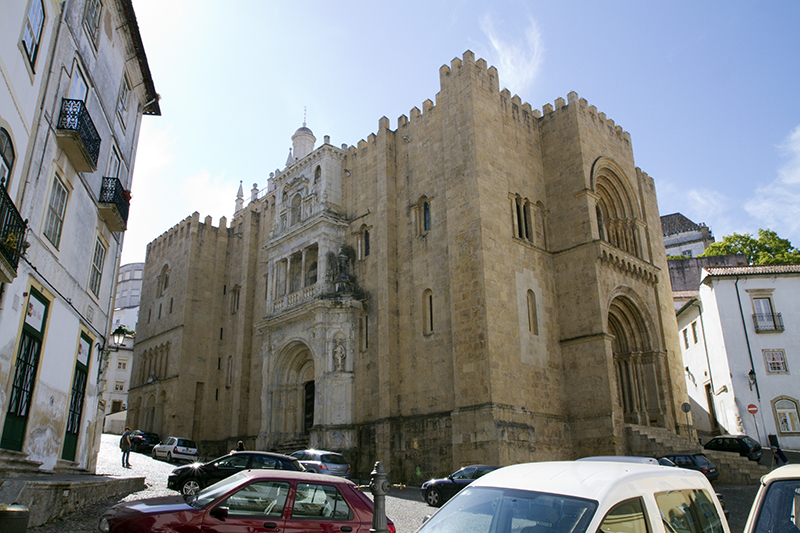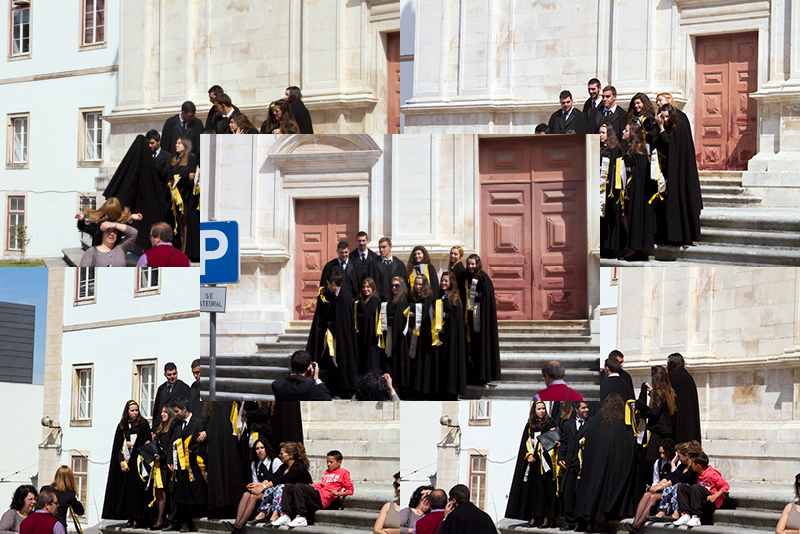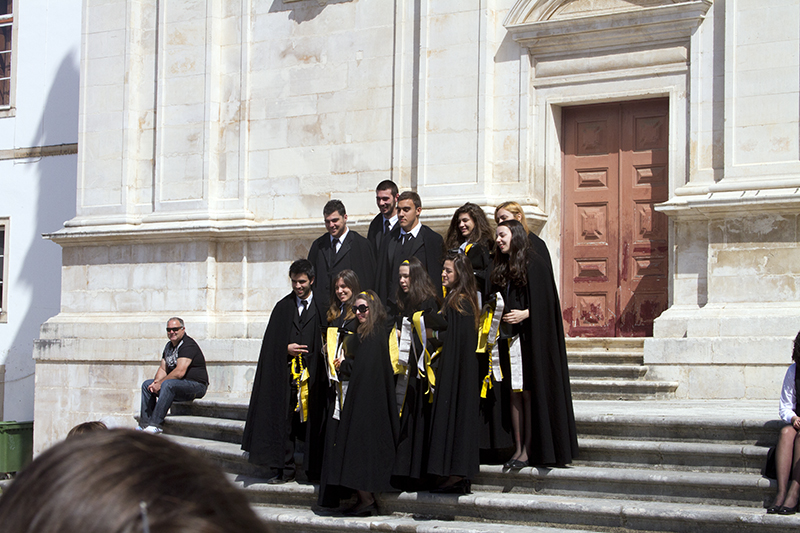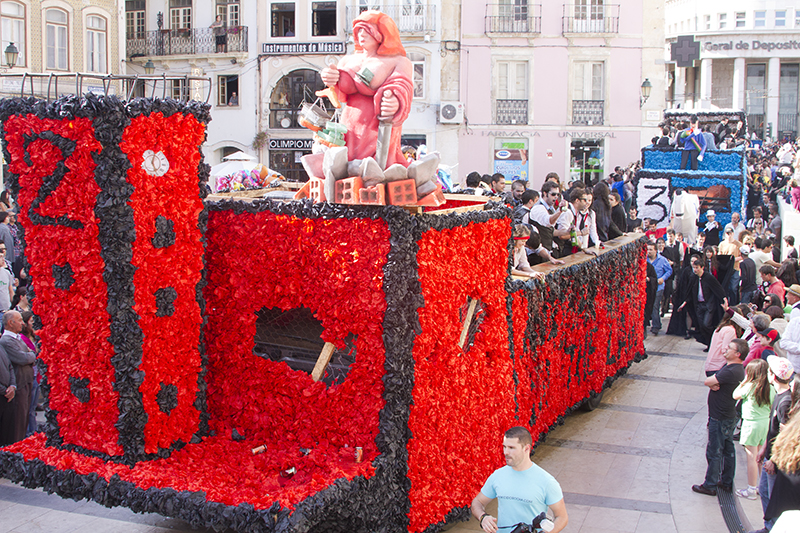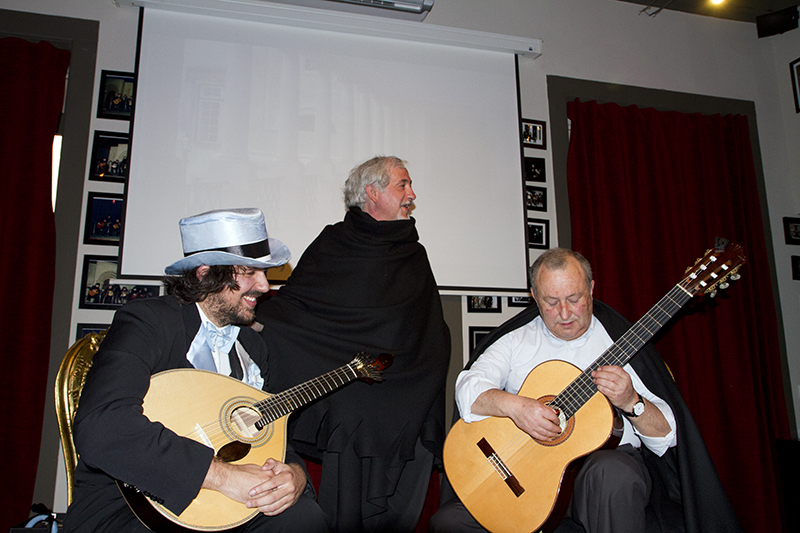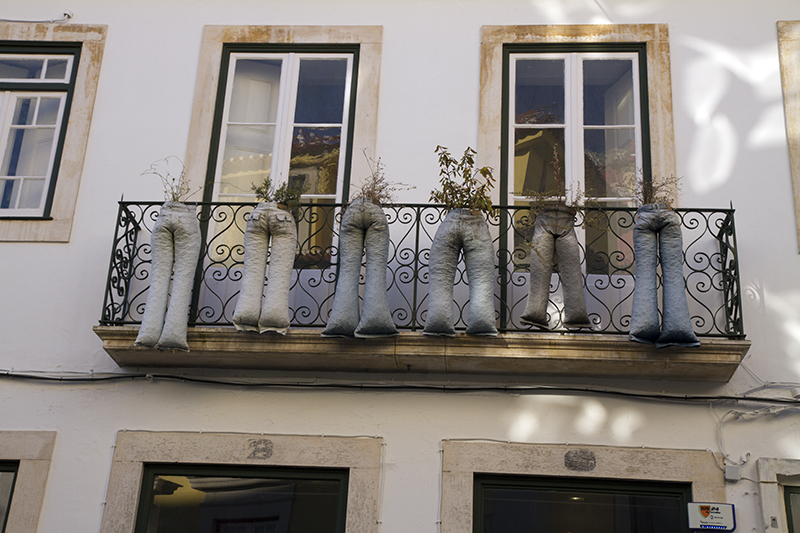In May, Bee and I spent two weeks traveling around Portugal. I had only spent a few days in Lisbon and therefore most of it was a new discovery for me as well.
We started in Porto. A beautiful ancient city on the Douro River. Walking around town, we ended up near our first church, not a major attraction as it is not even listed in our guide-book, called the Church of the Clergy (Igreja dos Clerigos) but decided to go in and marvelled at the intricate decorations inside – baroque at its finest (for some people I guess!)
What is more remarkable, and listed in the good book, is the Torre dos Clerigos, the church’s bell tower. The view from the top is reported to be quite nice, but 225 steps on a small spiral staircase and the line to buy tickets dampened our enthusiasm…
Much more impressive is the fortress-like Igreja da Misericordia. There is a small park in front of the church from which there is a spectacular view of the Douro River and the other bank, full of storage and ageaing warehouses for the Port.
This was taken inside Igreja de Sao Francisco, one of the best and most elaborately decorated churches in Porto. It is next to the Palacio da Bolsa (the local Chamber of Commerce) and attests to the wealth of the merchants, at one time, in this city. We visited the Bolsa as well.
Portugal, and particularly Porto, is renowned for the glazed tiles used to decorate the façade of buildings. There is a large collection of Azulejos (the blue tiles) in Porto and this is one of the major sites – the Capela das Almas. Not very decorated inside – I guess they spent all their cash on the outside. We actually saw this on the very first day as our hotel was just a few 100’s of meters up the same street. I waited for a clear day, and more time to take this photo, which is a montage as I could not get the right angle far enough away to do it in a single shot.
This is another example of Azulejos on Igreja do Carmo. It is the largest wall of tiles in Porto
Here is a view of the Douro River, the “left Bank” (Vila Nova de Gaia) taken from the front of the Cathedral. The river front is full of small, and not so small, shops where you can taste, and buy Port. We did do some of that, but I decided that I am not a Port drinker, except in special circumstances, like with a group of friends, with a really good “Vintage Port”
We did go to Vila Nova de Gaia so here is a view looking back at the old part of Porto.
The bridge on the right is quite remarkable. There is a passage for cars at the lower level, near the river and there is a passage for the subway on the top-level. This is the Ponte de Dom Louis I. The river front of the Porto side is full of cafés and restaurants, a bit touristy, but still very nice on a cool day.
The casks of Port used to be brought down river from the production vineyards up river to the city in boats similar to these. These are for Sandeman – you can see the typical silhouette on the front of the middle boat. Now, modern reconstructions are used to give tourist a ride on the river and under the bridges.
We went to visit the Mercado do Bolhao – an ancient market but still in use today. We were early and so activity was still limited, but we found the one publicity for vacuum cleaners quite interesting. The little pigs in front of the sausage stall were also very cute.
During one breakfast in the hotel, we were talking about visiting the Cathedral. The couple at the next table told us that we had to look for the cloisters – they are easy to miss and you have to pay extra to visit them, but definitely worth the few euros.
So we followed the instructions, and paid our dues to visit the cloisters. We were very glad we did!
The sun through the round hole left its mark on the Azulejos inside the cloister, as if the moon is actually back there!
Two walls full of Azulejos. Impossible to get both of them exposed correctly. I tried and failed to get the right balance.
There is a museum with Christian artefacts and the treasure of the church. I just could not resist taking this picture.
From Porto, we circulated and visited a few towns along the northern beaches. We had lunch in Vila do Conde and discovered this aqueduct that started life as a Roman aqueduct. It looks in a remarkable state of conservation and therefore must have still been in use recently.
Trees were still blooming.
We decided to spend a few nights in Guimaraes. We actually wanted to go to Braga, but could not find a decent hotel there, so we stopped in Guimaraes, which is only 20 km away and also a very nice town. On the first day, we went to explore the city and visited the Paço dos Duques de Bragança, or the palace of the Dukes of Braga. Situated above the city, so there is no way to miss it, we were just naturally drawn towards it. This is the main formal dining room.
There is a very nice inside courtyard – the palace was renovated recently as a presidential residence for Antonio de Olivera Salazar (the infamous prime minister from 1932 to 1968 who ruled Portugal as a dictator even though never president)
The chapel, inside the palace, had very nice stained glass windows.
The ground floor of the palace is a place for temporary exhibits. We found this painting very interesting. It is full of details and the longer you look at it, the more you discover. It was painted by Mario Jorge Ribeiro Condosa Vitoria (was not easy to remember all that). He was born in Coimbra (a university town we will visit later on this trip) in 1983 and is building a world wide notoriety.
We went to visit Braga, but I was uninspired by the sights there; I did not take any good photos. However, just outside of Braga is the Bom Jesus do Monte – a place of pilgrimage to see, and climb the Escadria do Bom Jesus (magnificent staircase build in the 18th century).
Here is a better look at the staircase, with a group of Dutch tourists who refused to get out of my way! We did it the easy way, taking a cable car up, and walking down the stairs. That is why you read the guide-book carefully, and to the end, so you learn about these little tricks.
After Guimaraes, we spend a few days along the Douro near the town of Pinhao at the Quinta do Portal which has wonderful accommodations in the middle of the vines.
From here we were able to circulate amongst the many Quinta’s which continue to make Port, but also make excellent wine, which is grossly underestimated, but also quite expensive! I was glad, because it would have been difficult to justify the extra weight getting onto the plane for the return trip if I had decided to buy any quantity of wine.
Quinta’s seem to be independent from the large firms selling Port. However, they have long-term relationships were several Quintas will provide the grapes and juice for the same Port company year after year. We went to visit the Quinta do Seixo that supplies Sandeman, hard to miss! You have to book your visit in advance as they are very busy, and even then, we had to wait about 1/2 hour for the tour to begin. Nice tour, but I was not impressed with the organisation.
The vines were just starting to grow! It is hard to imagine that in a few months, the branches will be around a meter long and will have huge bunches of grapes hanging from them. One needs to be patient, and trusting in nature.
Quinta do Portal ages its own wine and port. Not sure I remember which this is.
There is not a lot of flat land here so most vines are grown on terraces that have been earned from the hills with hard labour. Some of the terraces are so narrow that they only hold one string of vines. Because of this, the grapes have to be manually harvested – there is no way to get the machines up to most terraces.
The view from the tasting room at Quinta do Seixo – almost makes up for having to wait for the tour.
The traditional way to make the juice for port from the grapes is by stomping on them. When machines were introduced, similar to those used for wine, it was discovered that the quality of the port went down. Here is a stomping robot used for making Sandeman Port the old fashion way, but with a modern flair in order to preserve the quality.
The Quinta do Seixo has a very nice tasting room, with a fantastic view of the valley of the Douro. This is actually our guide who just finished the tour with us. All guides wear the traditional hat and cape of the Sandeman
The valley of the Douro gets a lot narrower just upstream of Pinhao. There is no road along the side of the river and therefore the only way to explore is by boat. We took another cruise on the Douro with a company recommended by the hotel – there are several available and it is always good to have recommendations. Competition is tight as several other people approached us.
Several views (not postcards) of life along and on the side of the river. There are more Quinta’s, we saw one other “traditional” boat (we also saw one cruise ship, but I did not take any picture as it ruined the scenery and the peace) and bottom left is a view of Quinta do Crasto, one of the reasons why we decided to go to Portugal, after tasting their excellent wine in, of all places, Stavelot, Belgium.
Even away from the river, the views remain spectacular. We had a very nice weather throughout our stay so we really enjoyed the outdoors
We had to leave the Douro Valley after a few days and moved on to a Paradores, a state run hotel usually located in old buildings. This particular Paradores was located in an old convent not far from Coimbra, where we were heading next.
I do not remember how now, but we had heard something about the celebration of students in Coimbra at the end of the school year. And we happened to be near Coimbra at the end of the school year. So we went to look for signs of celebration!
We started at the most solid looking church ever! Not much external decoration here. The church is called Se Velha; it is the “old church”. It is also the place where a lot of graduates come with their parents and friends to take pictures on this momentous occasion.
We did not have to wait long to see some examples. Students here still wear the traditional cape to go to school. They tie ribbons to their note-book. The colour of the ribbons is an indication of the faculty they attend. We guessed that the more ribbons, the higher the class, but never could confirm that.
At the end of the year, some ribbons are burned in front of the Se Nova, the new church started by the Jesuits in 1598. The ceremony is a symbolic way of freeing the students from the burden of going to school. This is well orchestrated, with successive groups given access to the cauldron for the burning. The instructions from the “staff” are very clear!
Over a 15 minute period, I observed, and photographed a group trying to get themselves in a group photo. How hard is it to get a good group photo? In each of the vignettes, there is an obvious problem, even the last one on top of the rest. I really feel for the “friend” trying to do these students a favour…
I do hope he managed to snap this one! Everybody looking front, everybody smiling, but I cannot tell if everybody has their eyes open.
Here is a panoramic view of the main quadrangle of the University of Coimbra. It is the oldest in Portugal originally founded in Lisbon in 1290 but moved to Coimbra in 1537. The person responsible for bringing the University here is Joao III who is shown facing the main building of the square.
The view from the open-end of the square, over the city and the Rio Mondego is quite spectacular.
There is also a parade to celebrate the end of the year. We walked amongst the floats as they were being readied for the parade. The preparation was mainly to make sure that the supply of beer was plentiful and accessible for those on the float. It seems that each faculty has one or more float, and, of course, good taste is not necessary. The Zeppelin was from the Electrical Engineers while the lady with the big bosom was from the mechanical engineers. I liked the pun of Austerix to poke fun at the government’s austerity measures.
Finally, the parade started. We had found a strategic place near Igreja de Santa Cruz. There was an elevated wall, and by arriving early, we had secured a place that overlooked the parade route. We did not know how strategic this place turned out to be…
The parade was led by a group of alumni from the Medical School. They were unprepared, with no float, and therefore no place to store beer. How quickly you forget things that just a few years earlier, when they were students, would have been really obvious.
And the first floats arrived. You can see at the front of this float the small hole in front so that the driver can see the road! There is also a small hole on the side. However, visibility must be severely restricted and the crowds are everywhere. We admired the steady hands of the drivers, especially here, as the passage next to us was very narrow, and uphill.
Since the people on the floats have beer, and those not on the floats do not, there is a lot of passing of beer from the top to the bottom. And this is not always done inside the can! I had to protect my camera at times as they were occasionally getting a little too enthusiastic about sharing.
We went to get a drink and came back, and the floats were still passing…
After a few more floats, there was enough beer on the ground to create a very nice slippery slope. Students would enjoy sliding their way across. The floats had less fun. The heavily loaded trucks had to get a head-of-steam in order to clear the small rise in the road, and that with thousands of people around and very limited visibility. There was one (and only one) policemen, managing the situation and he was a hero! He would direct the truck drivers and tell them when it was safe to literally gun the engine to get up the hill. The people in the back (last vignette) just had to hang on, or fall all over each other; it did not matter, they were well lubricated.
We had booked a show at the local Fado House for a live concert. The Fado in Coimbra is different from in Lisbon. Typically played by three people with more emphasis on the guitar, and especially the Portuguese guitar. We were entertained by an Engineer, a lawyer and a recently graduated architecture student. This was a very friendly atmosphere and we got to meet the musicians at a reception after the show. A bit touristy, but still well worth it. I thought the music was great.
Outside the Fado House, we saw these interesting planters. Finally a good use for faded jeans!
After dinner, the parade was still going on – I decided not to bore you with more photos of more floats. There were more than 100 floats in all. The parade finally finished around 9PM then we had to wait for the clean-up crew (who were very, very efficient) before the streets were re-opened and we could get back to our hotel.
A really enjoyable experience.
Next episode will cover other areas around Coimbra and then the end of the trip in Lisbon. Stay tuned!
(1887 Page Views)


